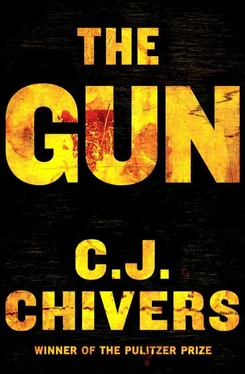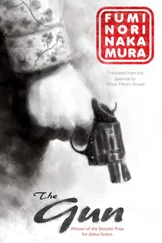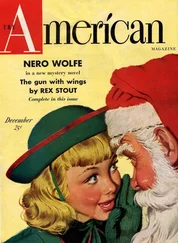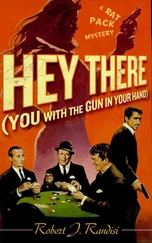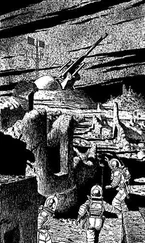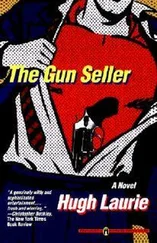Designed by Kyoko Watanabe
Jacket design by Timothy Hsu
Author photograph by Tyler Hicks
Manufactured in the United States of America
10 9 8 7 6 5 4 3 2 1
Library of Congress Cataloging-in-Publication Data
Chivers, C. J.
The gun / C. J. Chivers—
1st Simon & Schuster hardcover ed.
p. cm.
Includes bibliographical references.
1. AK-47 rifle—History. 2. War—History. 3. Machine guns—Technological innovations—History. 4. Firearms—Technological innovations—History. I. Title.
UD395.A16C47 2010
623.4'424—dc22 2010020459
ISBN 978-0-7432-7076-2
ISBN 978-1-4391-9653-3 (ebook)
Other older and more traditional rifles would displace the M-16 from second place if they were still in widespread service, but they fell from common use with the spread of assault rifles. The British Lee-Enfield line, for example, was manufactured in greater numbers than the M-16 during its many decades in use across the old British Empire.
Maxim’s difficult personality would not help him in his relations with Vickers. He would retire in February 1911. On a motion in March by Albert Vickers, one of Maxim’s earliest supporters, the firm would quickly strike the word Maxim from the company name and its correspondence, becoming Vickers, Ltd.
An estuary or creek; the Sudanese commander sought protection for his forces in a ditch.
Almost sixty years later, this would be the concept used to make the AK-47 an automatic rifle and usher in the assault rifle era.
A Japanese unit of measure, approximately six feet. By Lieutenant Sakurai’s estimates, then, the Russians were opening fire at a distance of about thirty feet.
The spelling and grammatical errors of Rixon’s shorthand are retained here.
Stretcher-bearers.
The 7.62×54R cartridge remains in use today. PK machine guns and SVD sniper rifles, andtheir many derivatives, are chambered for this round.
Zhukov’s memoirs are silent on this meeting. Though they were heavily edited by the party officials who watched over the Soviet armed forces, they make no mention of Kalashnikov whatsoever. See The Memoirs of Marshal Zhukov (London: Jonathan Cape, 1971).
In one memoir, Kalashnikov dates the meeting as July 2. In another, he gives the date as July 8. In an interview in 2003 Kalashnikov suggested that the meeting was in June (from the typewritten notes of an interview provided to the author by Nick Paton Walsh, correspondent for the Guardian , who interviewed Kalashnikov in Izhevsk).
Surikov, a colonel, worked for the Main Artillery Department; in this account he has been assigned to nurture Sergeant Kalashnikov’s development, and ventured to a firing range to find him and to convince him to enter the contest for an avtomat (author’s note).
Just how mediocre? Two decades later, the U.S. Army would hold long-range firing tests with Kalashnikov variants, including three Soviet, two Chinese, and a Romanian model. At 300 meters, expert shooters at prone or bench rest positions had difficulty putting ten consecutive rounds on target. The testers then had the weapons fired from a cradle by a machine, which removed human error. At 300 meters, the ten-rounds group fired in this manner had a minimum dispersion of 17.5 inches, compared to the 12.6 inches with an M-16, the American assault rifle fielded in Vietnam as a reaction to the Kalashnikov’s spread. From Long-Range Dispersion Firing Test of the AK-47 Assault Rifle, U.S. Army Foreign Science and Technology Center, August 1969.
Nelly Kalashnikova, Mikhail Kalasnikov’s stepdaughter, strongly objected to portrayals of her family as poor, and of Kalashnikov as a pauper or victim of a threadbare system. On Mikhail Kalashnikov’s eighty-fifth birthday in 2004, she was quoted in Tribuna, a Russian newspaper: “Do not tell everybody that my father was very poor. Compared to other people we were well off…. Our mother was an extremely beautiful woman and used to buy the best hats and expensive fur coats. Father loved to buy coats for her and he could afford it.”
Kalashnikov’s comments about secrecy, a staple in his writing and remarks in later years, do not square with either the story of the AK-47 or the trajectory of his own considerable public life. In one memoir, he wrote, “I, Kalashnikov, was surrounded with an impenetrable veil of secrecy.” The veil has been a canard, a post-Soviet line that Kalashnikov and his handlers have repeatedly used, perhaps to increase his Cold War cachet. The record does not support this characterization. Kalashnikov and his work were not only acknowledged by Soviet authorities; they were celebrated and publicized. The attention fit an established tradition for prominent Soviet small-arms designers, who were the opposite of secrets. Konstruktors were often pushed into view and praised as model patriots, men whose labors secured the homeland. This reflected the pragmatic side of propaganda. What was the point of trying to keep a secret that could not be kept? A rifle was unlike ballistic missiles or the submarines that carried them, items that were used by small numbers of people and did not change hands. Once a rifle entered mass production and went into general issue, no matter the amount of secrecy that had enveloped its development, it was a secret no more. It was a basic tool, carried by millions of pairs of hands. With the AK-47, publicity was more than an option for the Communist Party. It was an opportunity, and Soviet propagandists acted immediately. In late 1949, after the avtomat was selected as the army’s standard rifle, Kalashnikov was featured on the cover of Sovetsky Voin, a magazine in general circulation within the military. A range of publications continued to cover him from then forward.
How Stalin died is a matter of historical dispute. Beria, according to Vyacheslav Molotov, a member of the inner circle, boasted of dispatching the dictator with rat poison.
All the Warsaw Pact nations except Czechoslovakia would adopt the Kalashnikov system as their standard rifles, and often as police weapons, too; and would subsidize plants producing large numbers of Kalashnikov knockoffs. Albania, however, would not receive its technical aid for production from the Soviet Union. China would provide that assistance.
A Colt .38-caliber revolver, a Luger 9-millimeter, a Colt .45-caliber revolver, and more.
Fabrique-Nationale de Herstal, a Belgian firearms manufacturer.
The Type 56 assault rifle, the clone of the AK-47 made in Mao’s China since the Soviet army passed the technical specifications to the People’s Liberation Army in the mid-1950s.
The available data, compiled in the database of the Wound Data and Munitions Effectiveness Team, or WDMET, showed that 51 percent of American combat fatalities in Vietnam during the period under study were caused by small arms, 36 percent by fragmentation munitions, and 11 percent by mines and booby traps. From Ronald F. Bellamy and Russ Zajtchuk, Textbook of Military Medicine. Part I. Warfare, Weaponry and the Casualty. Conventional Warfare: Ballistic, Blast and Burn Injuries, Chapter 2, Assessing the Effectiveness of Conventional Weapons (Washington, D.C.: Office of the Surgeon General, 1989), p. 65.
Читать дальше
